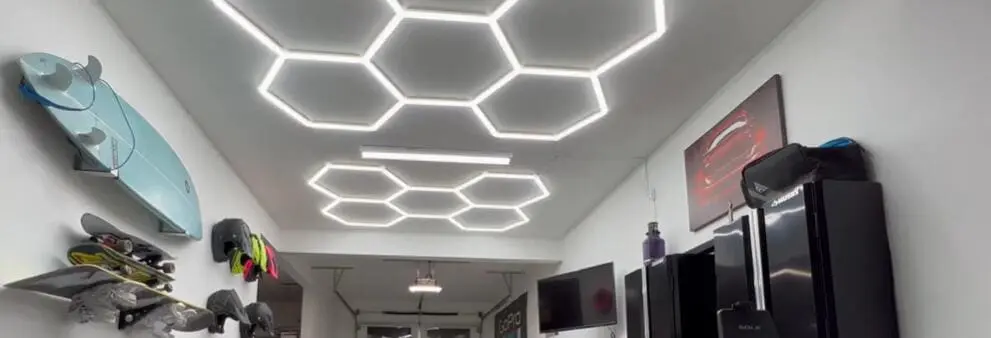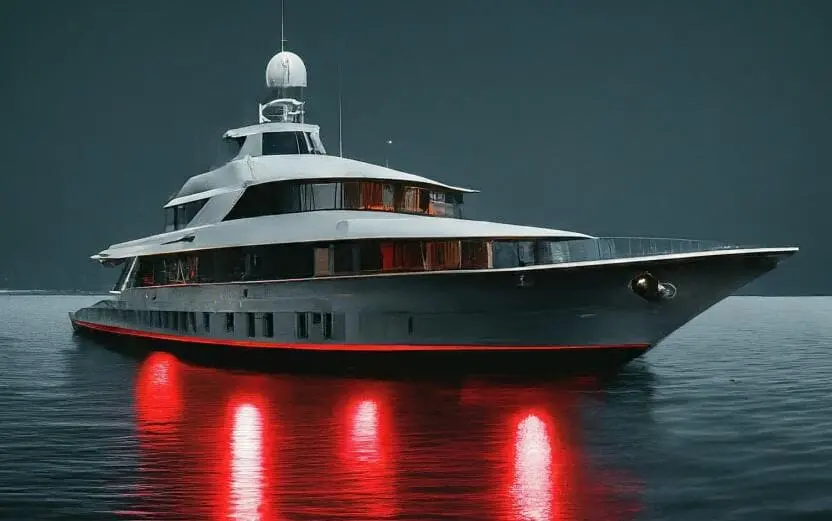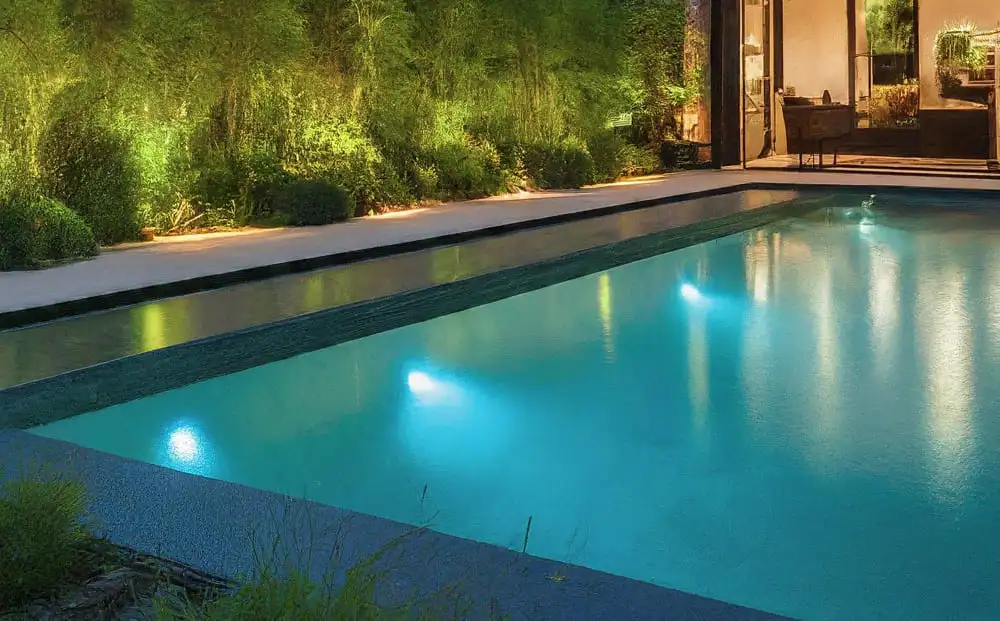Introdução
Imagine um armazém movimentado: empilhadeiras se movimentando, trabalhadores realizando seus trabalhos e itens sendo separados e embalados perfeitamente. Mas e se estiver muito escuro? Torna-se um lugar para ineficiência, acidentes e cansaço visual.
A iluminação adequada em um armazém é importante. É como um guia silencioso que ajuda a realizar o trabalho de forma segura, eficiente e econômica.
Este guia irá ajudá-lo a compreender melhor a iluminação do armazém. Iremos nos aprofundar no assunto, ajudando você a se tornar um especialista. Ao final, você saberá escolher o melhor sistema de iluminação para o seu armazém. Dessa forma, será um local iluminado e eficiente para todos.
Compreendendo as necessidades de iluminação do armazém
Esqueça as lâmpadas incandescentes velhas e fracas. Hoje, os LEDs são os melhores para iluminar armazéns. Economizam energia, duram mais e emitem uma luz brilhante, perfeita para grandes áreas como armazéns.
Mas não escolha LEDs sem pensar. Para aproveitá-los ao máximo, considere as necessidades específicas de iluminação do seu armazém. Considere o tamanho do espaço, quais atividades são realizadas nele, o ambiente desejado e as regras de segurança. Depois, você pode criar uma solução de iluminação que utilize os pontos fortes dos LEDs e atenda às necessidades exclusivas do seu armazém.
Aqui estão dois fatores principais que influenciarão suas escolhas de iluminação:
Que tipo de atividade ocorre em seu armazém?
Compreender o tipo de atividade que ocorre no seu armazém é crucial para determinar os requisitos de iluminação adequados. Se o seu armazém envolve uma operação de coleta e embalagem em ritmo acelerado, alta visibilidade é essencial. Por outro lado, se servir principalmente como local de armazenamento, a luz ambiente geral pode ser suficiente. Identifique suas principais atividades para decidir quanta luz você precisa e que tipo de luminária usar para suas necessidades.
Requisitos de iluminação do armazém
Requisitos de iluminação do armazém: uma análise (segurança, eficiência, & Mais!)
• Segurança: A iluminação adequada é importante para garantir um ambiente de trabalho seguro nos armazéns. Caminhos, áreas de armazenamento e estações de trabalho adequadamente iluminados reduzem o risco de acidentes e lesões.
• Eficiência: Soluções de iluminação eficientes ajudam a otimizar as operações do armazém, melhorando a visibilidade, reduzindo o consumo de energia e melhorando a produtividade geral.
• Iluminação específica para tarefas: As tarefas em diferentes áreas do armazém necessitam de diferentes níveis de iluminação. Soluções de iluminação específicas para cada área podem melhorar a eficiência e o conforto dos funcionários.
• Conformidade regulatória: Os regulamentos de segurança desempenham um papel crucial na iluminação do armazém. OSHA (Administração de Segurança e Saúde Ocupacional) descreve níveis mínimos específicos de foot-candle (Fc) para diferentes áreas de um armazém. Garantir o cumprimento destes regulamentos não é apenas essencial para a segurança dos trabalhadores, mas também evita potenciais penalidades.
Ao considerar esses fatores-chave e mergulhar mais fundo no mundo dos cálculos de iluminação e design de layout, transformaremos seu armazém de um labirinto mal iluminado em um farol de eficiência e produtividade. Fique ligado enquanto exploramos juntos o fascinante mundo da iluminação de armazéns!
Cálculo da iluminação do armazém
Agora que cobrimos os princípios básicos para escolher a luz certa para o seu armazém, vamos mergulhar nos detalhes: Descobrir a quantidade certa de luz. Falaremos sobre lúmens e potência e também responderemos à pergunta comum: “Quantos lúmens você precisa para o seu armazém?”
Quantos FC são necessários para diferentes tipos de espaços de armazém
Descubra quanta luz seu armazém precisa. Medimos isso em Lumens ou Foot-Candles. Veja quantas velas de pé (fc) diferentes tipos de espaços de armazém precisam:
| Área em Armazém | Required Light Level (in Foot-Candles) |
| General Storage | 30-50 fc |
| Picking and Packing | 50-75 fc |
| Loading Areas | 50-75 fc |
| Assembly Spots | 75-100 fc |
| Office Spaces | 50-75 fc |
| Shelves and Aisles | 50-75 fc |
| Stairs and Lifts | 5-10 fc |
| Washrooms | 20-50 fc |
| Areas Storing Dangerous Items | 50-75 fc |
Understanding Lumens: A Simple Guide to Brightness
It used to be common to measure the brightness of warehouse lights in wattage. But now, we use lumens. Lumens tell us how much visible light a light source gives off. You can think of lumens as the power of your lighting system—the more lumens, the brighter the light.
However, not all LED lights with the same wattage give off the same amount of lumens. Newer lights can give off more light while using less energy. This is called lumens per watt efficiency. So, if you only look at wattage when choosing warehouse lights, you might end up with a workspace that isn’t bright enough.
Now, let’s answer the big question:
How Many Lumens Do You Need for Your Warehouse?
Unfortunately, there’s no one-size-fits-all answer. The ideal number of lumens for your warehouse depends on several factors, including:
• Warehouse Height: Light spreads and gets dimmer over distance. Higher ceilings necessitate more lumens to achieve the desired light level at floor level.
• Activities Performed: What you do in your warehouse affects how bright the light needs to be. If you’re doing tasks like picking inventory or quality checking, you’ll need a brighter light.
• Warehouse Layout & Aisle Width: The design of your warehouse, including the width of aisles and the arrangement of shelves, also impacts how much light you need. If you have narrow aisles or lots of storage areas, you might need more focused lighting.
Appropriate lumens at Various Heights of LED warehouse lighting
We often get questions about the best lumens for warehouses of different heights. While we always recommend a personalized lighting plan, here are some general suggestions for achieving optimal brightness without excessive illumination.
| Height (ft) | Suggest Lumens |
|---|---|
| 12-15 | 10,000-18,000 |
| 15-20 | 16,000-24,000 |
| 25-35 | 38,000 |
| 25-25 | 35,000 |
Warehouse Light Layout Design
A good warehouse lighting plan takes into account factors such as:
• Spacing: The distance between fixtures plays a crucial role. Spacing too close can create glare, while too far apart leaves areas under-lit. Understanding the beam angle (the spread of light) of your chosen fixtures is essential for optimal spacing.
• Uniformity: The goal is to create a consistent level of light throughout the entire warehouse. This minimizes shadows and ensures workers have clear visibility in all areas, reducing accidents and improving efficiency.
• Crossover Lighting: Crossover lighting involves positioning fixtures in rows so that the light beams overlap slightly. This eliminates dark spots and ensures uniform illumination, even in wide aisles.
• Natural Light Integration: If your warehouse has windows, consider their placement when designing your layout. Maximize the use of natural light during the day by positioning fixtures strategically to supplement natural illumination.
Choosing the Perfect Warehouse Lighting Fixtures
Types of LED Warehouse Light Fixtures
Here are some popular warehouse lighting fixtures and their ideal applications:
1. High-Bay LED Lights: Ideal for warehouses with high ceilings, high-bay LED lights deliver powerful illumination over large areas. These fixtures are designed to provide uniform light distribution and can be mounted at heights of 20 feet or more, making them perfect for warehouses, distribution centers, and manufacturing facilities.
2. Low-Bay LED Lights: Suitable for warehouses with lower ceiling heights, low-bay LED lights offer efficient lighting solutions for areas with clearance heights ranging from 12 to 20 feet. These lights make sure aisles, storage areas, and workstations are well-lit for clear sight and safety.
3. Linear LED Fixtures: Linear LED fixtures are versatile lighting solutions that can be mounted flush to the ceiling or suspended from overhead structures. These fixtures are commonly used to provide task lighting in specific areas of the warehouse, such as packing stations, assembly lines, or inspection areas.
4. Wall Packs & Flood Lights: These powerful fixtures are ideal for illuminating exterior areas like building perimeters, loading docks, and security zones. They offer a wide beam angle and high lumen output for enhanced security and visibility.
Mounting Options for LED Warehouse Lights
In addition to selecting the right type of LED warehouse lights, choosing the appropriate mounting option is equally important for achieving best illumination and efficiency.
1. Ceiling Mount: Ceiling-mounted LED fixtures are ideal for warehouses with ample overhead clearance. These fixtures are directly attached to the ceiling surface, providing uniform illumination across the entire workspace.
2. Pendant Mount: Pendant-mounted LED fixtures are suspended from overhead structures using chains, cables, or rods. This mounting option allows for adjustable height and direction of light, making it suitable for areas where precise lighting control is required.
3. Wall Mount: Wall-mounted LED fixtures are installed directly onto vertical surfaces, providing focused illumination in specific areas of the warehouse, such as loading docks, entryways, or corridors.
Choosing the right LED lights for your warehouse can make your workspace brighter and safer. It also helps you work better and faster. Whether you need large lights for big storage areas or smaller lights for specific tasks, there’s a suitable option for you.
Key Considerations for Effective Warehouse Lighting
1. Wattage:
-
- Choose the right wattage based on your needs.
- Aim for 50-75 watts per 1000 square feet of floor space.
2. Color Temperature:
-
- Consider the color temperature that works best for your warehouse:
- Cooler color temperatures (5000K-6500K) are ideal for task lighting.
- Warmer color temperatures (3000K-4000K) are suitable for ambient lighting.
- Consider the color temperature that works best for your warehouse:
3. Mounting Height:
-
- Select lights appropriate for your mounting height.
- High bay lights are typically mounted between 20 and 40 feet high.
4. Type of Mounting:
- Choose between surface-mounted and suspended high bay lights based on your warehouse layout.
5. Energy Efficiency:
-
-
- Prioritize energy-efficient high bay lights to reduce consumption and costs.
- Look for high efficacy (lumens per watt) ratings.
-
6. Durability:
-
- Ensure the chosen high bay lights are durable and built to withstand warehouse conditions.
- Look for lights designed to resist dust, vibration, and other environmental factors.
7. Integration with Lighting Controls
Make the lights work with the control systems so we can manage and automate them from one place. This lets us easily adjust how bright the lights are in the whole warehouse.
Conclusion
This guide helped you understand warehouse activities, calculate lumens, choose the right LED fixtures, and improve efficiency. Using these tips, your warehouse will not only be well-lit, but your team will also be more productive and safe. Start now and reach out to us for a free consultation to create the best lighting for your specific warehouse!
Frequently Asked Questions
Q: What’s the best kind of lights for a warehouse?
A: The type of lighting that is best for a warehouse depends on various factors, including the warehouse layout and specific lighting requirements. commonly used lighting types are High Bay Lights /Low Bay Lights/Linear light, etc
Q: How do you calculate lighting for a warehouse?
A: To calculate lighting for a warehouse, you need to consider the square footage of the space and the activities taking place. Determine the recommended lumens per square foot based on the type of operation (e.g., picking and packing or storage). Multiply the square footage by the recommended lumens per square foot to get the total lumens required for the warehouse.
Q: How many lumens do you need for a warehouse?
A: The number of lumens needed for a warehouse depends on the specific requirements and activities. As a general guideline, warehouses typically require around 20-50 lumens per square foot. However, this can vary based on factors such as task complexity, ceiling height, and safety regulations.
Q: What are the lighting requirements for a warehouse?
A: The lighting requirements for a warehouse include:
- Sufficient brightness to ensure safety and productivity
- Uniform lighting distribution to minimize shadows and glare
- Adequate color rendering to accurately identify objects and labels
- Energy efficiency to reduce operating costs
- Compliance with safety regulations and standards



